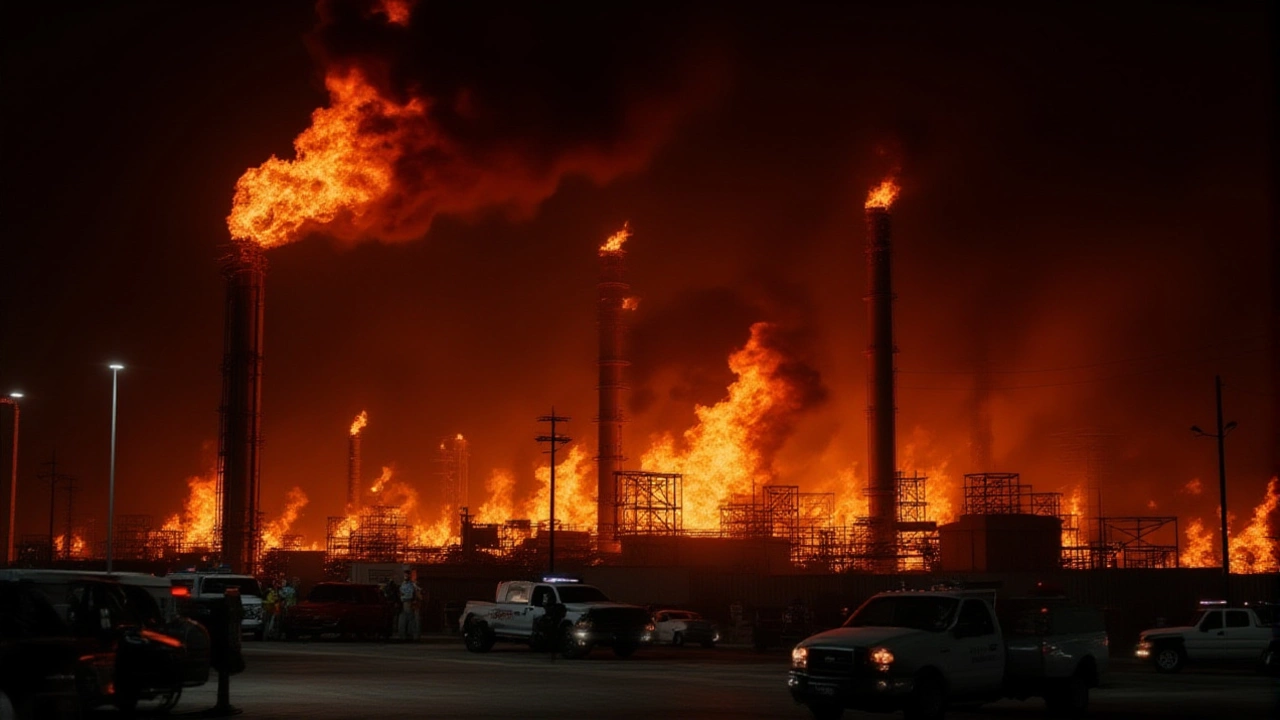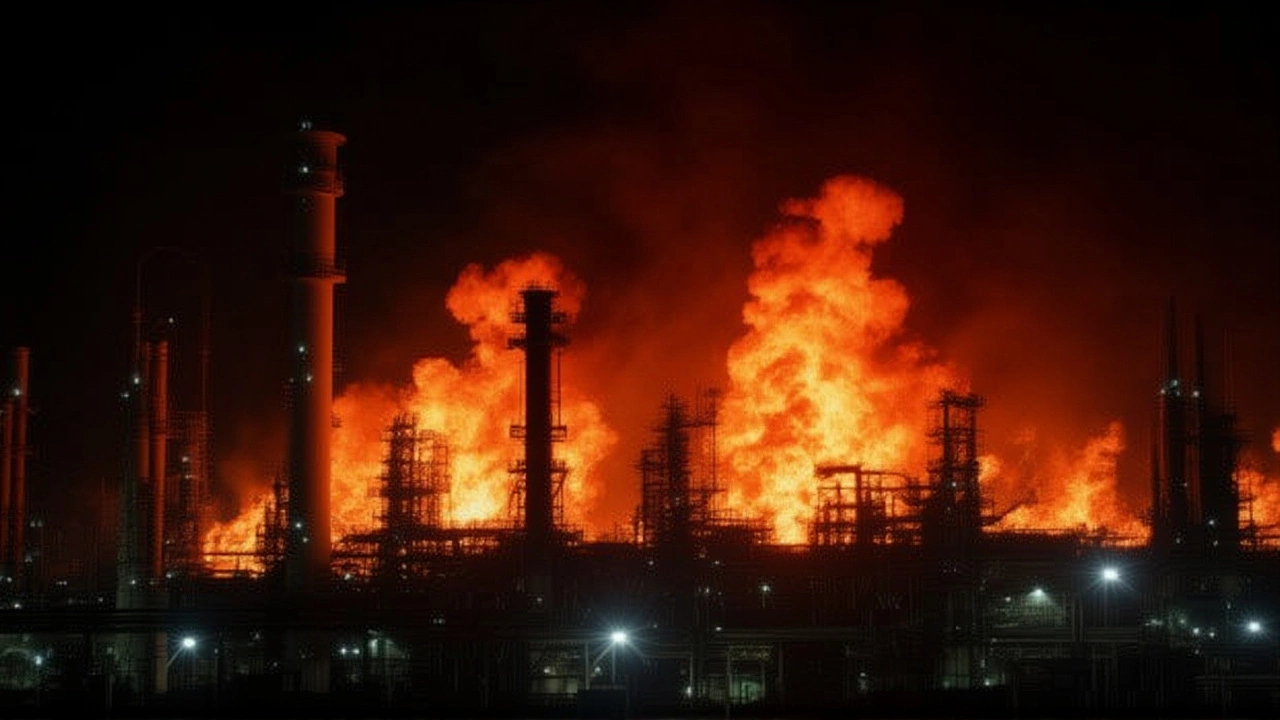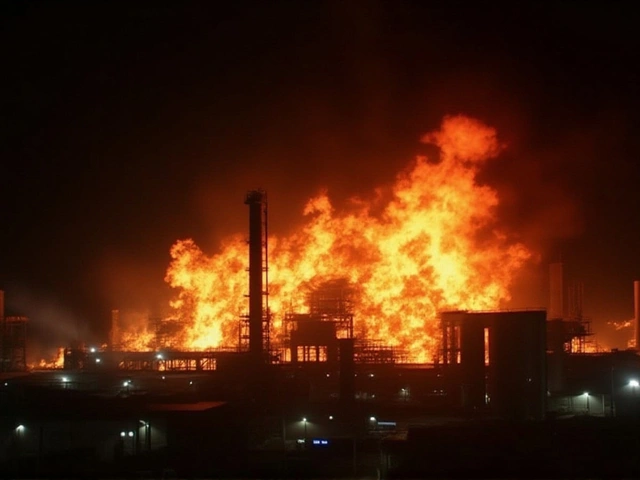When Chris Pimentel, mayor of El Segundo received the call on Thursday night, October 2, 2025, he knew the city’s proximity to a major energy hub could turn a routine incident into a regional crisis. At about 9:30 p.m. PST, a massive explosion ripped through the Chevron refinery, sending a fireball soaring roughly 300 feet into the night sky. Residents on the South Bay reported a thunderous roar that rattled windows and a glow that stretched for miles, visible even from the nearby Pacific Coast Highway.
Background: The Chevron El Segundo plant
Operating on nearly two square miles of coastal land, the El Segundo refinery is one of the United States’ largest petroleum‑processing complexes. Its maze of pipes—more than 1,100 miles in total—feeds a series of units that blend gasoline, diesel and jet fuel for a market that stretches from Los Angeles to Seattle. The facility’s own fire department has historically handled routine incidents, but the scale of Thursday’s blast demanded outside assistance.
Founded in 1911, Chevron’s Southern California operations have weathered earthquakes, hurricanes and previous fires, yet each event reshapes public perception of industrial safety. The plant sits just two miles from Los Angeles International Airport, a fact that amplifies any emergency’s potential ripple effects.
Explosion and fire: What happened?
According to the initial Chevron refinery explosionEl Segundo, California, a processing unit suffered a sudden over‑pressure event that ruptured a section of pipe. The resulting jet of hydrocarbons ignited instantly, creating a fireball that lit up the night like a second sunrise.
Witnesses captured shaky cellphone footage of flames licking the sky, while nearby homes reported the sensation of a minor earthquake. "It felt like the ground moved beneath us," said one resident who preferred to remain anonymous. The blast’s shockwave shattered a few storefront windows but, remarkably, caused no structural damage to nearby buildings.
Emergency response
Within minutes, Los Angeles County Fire Department crews converged on the site, supplementing Chevron’s own emergency teams. "We were able to respond with Chevron fire immediately, our station is about .25 mile away from the gates of Chevron," Mayor Chris Pimentel told reporters, emphasizing the swift coordination.
Holly Mitchell, a Los Angeles County Supervisor, later confirmed that "the fire has been contained and there is no cause for alarm for El Segundo or the surrounding areas." While the blaze was isolated to a single processing unit, officials urged residents to stay indoors as a precaution against potential air‑quality impacts.
By 7 a.m. on Friday, October 3, the fire was declared contained, though smoldering hotspots lingered. Full extinguishment was achieved by evening, allowing a preliminary visual inspection that suggested limited damage to the refinery’s superstructure.

Environmental monitoring and health safeguards
The South Coast Air Quality Management District dispatched mobile monitoring units to sample particulate matter, volatile organic compounds and sulfur dioxide. Initial readings showed no immediate spikes, but officials warned that "conditions could change" as the fire’s remnants cooled.
The California Governor’s Office of Emergency Services coordinated statewide resources, ensuring that any potential hazardous plume would be tracked in real time. To date, no injuries have been reported, and Chevron confirmed that "all refinery personnel and contractors have been accounted for and there are no injuries."
Economic repercussions: Fuel prices on the line
El Segundo’s refinery processes roughly 350,000 barrels of crude a day, a chunk of the West Coast’s gasoline supply. Even a brief shutdown can tighten the market, nudging prices upward. Analysts at Energy Insights predict a short‑term price bump of 3‑5 cents per gallon on the Pacific corridor, especially if maintenance delays extend the unit’s offline period.
Drivers in Los Angeles, San Diego and beyond may notice the shift at the pump within the next week. "It's a reminder of how a single event at a single plant can ripple through the entire supply chain," said Dr. Maya Patel, a professor of energy economics at UCLA. She added that the market typically absorbs such shocks within 48‑72 hours, but prolonged outages could force refiners to import more costly jet fuel from overseas.
Investigation and next steps
Federal and state investigators, including the Occupational Safety and Health Administration (OSHA) and the U.S. Chemical Safety Board, arrived on Friday to secure evidence. The focus will be on the malfunctioning pressure valve suspected of triggering the over‑pressure event.
Chevron has pledged full cooperation and announced a $2.3 million fund to support local community outreach and environmental testing. "We take this incident seriously and are committed to transparency," said a Chevron spokesperson, echoing the company's standard crisis‑communication stance.
Meanwhile, the city council will hold a public hearing next Tuesday to discuss long‑term safety upgrades, potentially involving new fire‑suppression technology and increased buffer zones between the refinery and residential neighborhoods.
- Explosion time: 9:30 p.m. PST, Oct 2, 2025
- Location: Chevron refinery, El Segundo, CA
- Height of fireball: ~300 feet
- Response agencies: Chevron Fire Dept., LA County Fire, city officials
- Potential fuel price impact: +3‑5 cents/gal

Frequently Asked Questions
What caused the explosion at the Chevron refinery?
Investigators suspect a pressure‑relief valve malfunction in a processing unit, which led to an over‑pressure event and a subsequent rupture of a 1,100‑mile pipeline network. The official inquiry is still ongoing, and a final report is expected within 60 days.
Are nearby residents at risk of health issues?
So far, air‑quality monitors have not detected elevated toxin levels. Health officials advise staying indoors as a precaution, but no immediate health threats have been reported.
Will gasoline prices rise on the West Coast?
Energy analysts forecast a short‑term increase of 3‑5 cents per gallon due to the temporary loss of roughly 350,000 barrels of daily refining capacity. Prices are expected to normalize once the unit is back online.
How did emergency services handle the fire?
Chevron’s own fire brigade, backed by the Los Angeles County Fire Department and neighboring municipal units, contained the blaze within eight hours. The fire was fully extinguished by Friday evening.
What steps will be taken to prevent future incidents?
The city council plans a public hearing to discuss upgraded safety measures, including modernized pressure‑relief systems, expanded emergency‑response zones, and increased community‑notification protocols.
